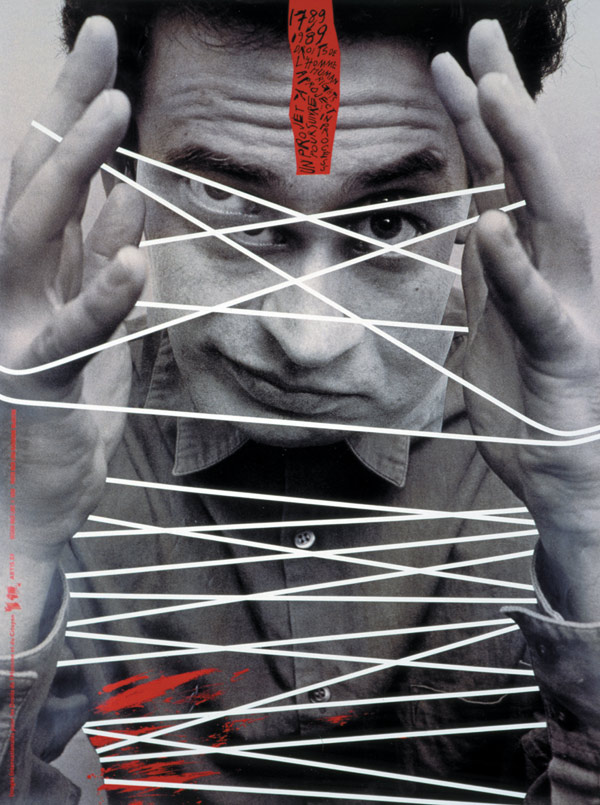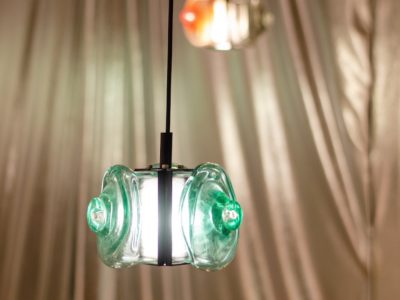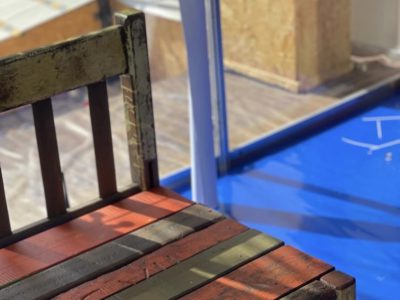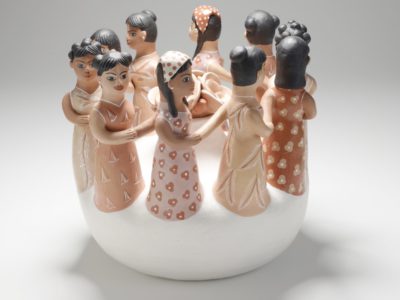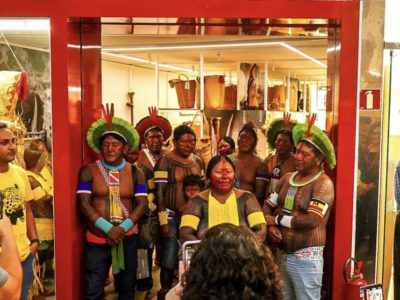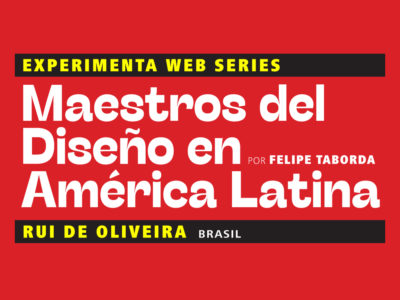Rico lins is one of Brazil’s most influential graphic designers. He has participated in and curated diverse exhibitions, including the one recently organised at the Sao Paulo Image and Sound Museum to present the magnificent posters he developed for the Sao Paulo Jazz Symphony Orchestra. His graphic work is informed by a copious and exuberant variet y of signifiers and signified meanings, blending european influences with brazilian ones in an amalgamation of worlds brought together in a single visual collage.
International images for the Rights of Man and Citizens, France, 1989.
One of many possible descriptions of the design process could be this: “observing things which other people do not see and bringing them to light”, i.e. giving shape to “unexpressed” feelings, unrecognisable behaviours, vague sensibilities in the air. There is no single, clear-cut method to attain this. It is an attribute of designers, being the link between clients and users. That is why designers must put themselves in the consumers’ place to understand, share and, eventually, express their aims.
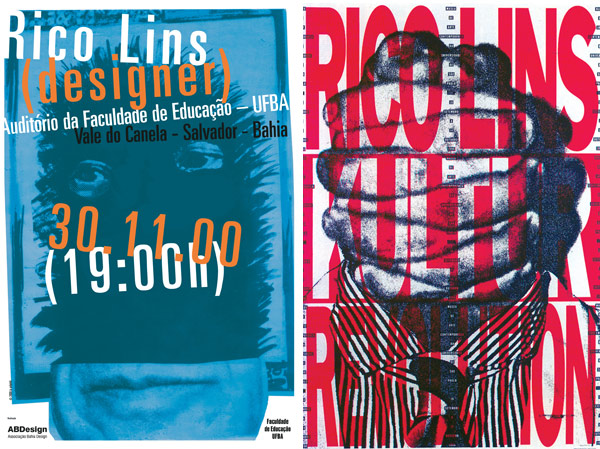 Poster for his solo exhibition, conference and workshop in Bahía, Brazil, 2000. Right, poster for the exhibition of his work for KulturRevolution magazine in Paris, Sao Paulo and Rio de Janeiro.
Poster for his solo exhibition, conference and workshop in Bahía, Brazil, 2000. Right, poster for the exhibition of his work for KulturRevolution magazine in Paris, Sao Paulo and Rio de Janeiro.
Design culture, then, is responsible for setting in motion a practice (which cannot be a strategy) that partakes in the everyday life of the persons to whom, later, these messages will be addressed. A practice of observation (and abduction, which the British call serendipity) that is difficult to formalise, since it is applied in the “here and now” to solve specific problems, but which nonetheles represents the soul of the designer’s trade. This is also why designers do not have a single style —if the term is used to designate the simple presence of coded visual coefficients— but, rather, a “way” of looking at problems that is materialised in different applications, evolving on a par with their professional experience.
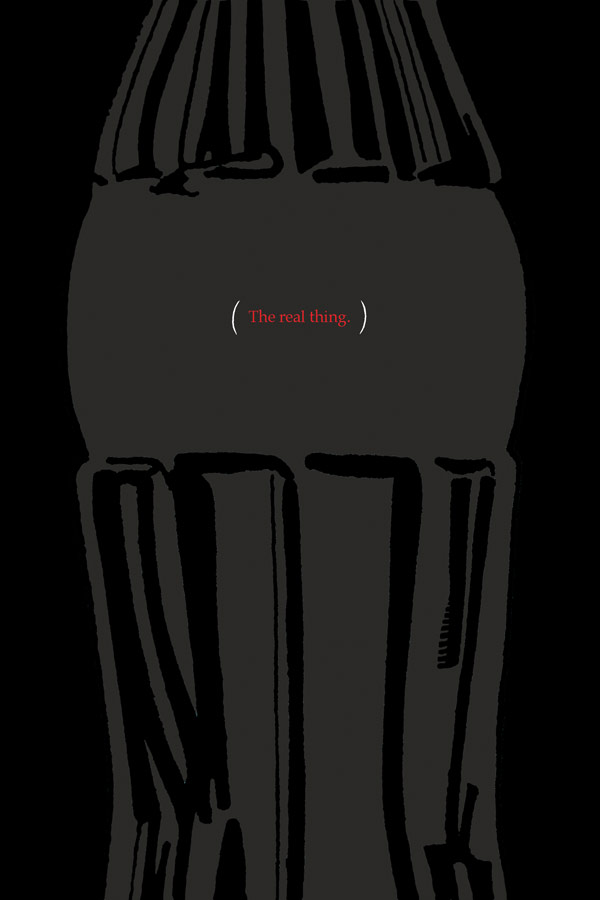 The Real Thing, poster to commemorate the 25th anniversary of the Coca-Cola Art Project, 1992.
The Real Thing, poster to commemorate the 25th anniversary of the Coca-Cola Art Project, 1992.
This is, basically, what we call culture: the designer’s culture, which is so difficult to express with diagrams and formulae at the beginning of each design presentation (when it would be useful to underscore its value), but which in its flexibility, i.e. in its capacity to be both strategic and tactic, finds specific solutions for concrete problems. Thus, as a designer’s training increases, so does his potential to create diverse languages and strategies (together with their tactic applications), distinguished by the greater freedom shown in the use of the elements of a “grammar” of looking, the creation of mixed works with solutions that belong to different contexts or, even, “with the crossing” of these cultural legacies, contexts and traditions.
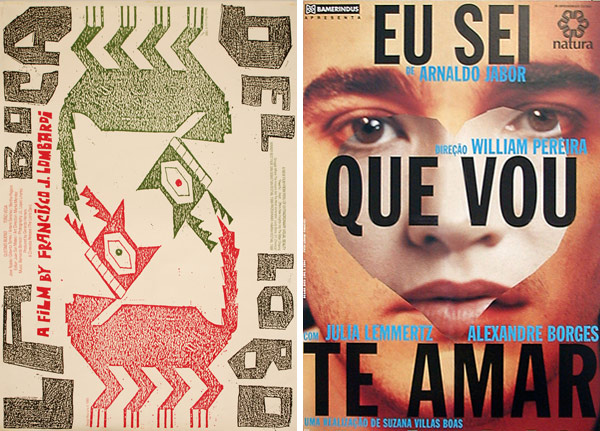 Left, poster for Francisco J. Lombardi’s film La boca del lobo (The Jaws of the Wolf), 1989. Right, poster for William Pereira’s film Eu Sei que Vou Te Amar (I Know I’m Going to Love You), 1986.
Left, poster for Francisco J. Lombardi’s film La boca del lobo (The Jaws of the Wolf), 1989. Right, poster for William Pereira’s film Eu Sei que Vou Te Amar (I Know I’m Going to Love You), 1986.
In sum, fleeing from stereotypes and seeking a language (la langue of Ferdinand de Saussure) with all its incarnations (la parole, always quoting Saussure?). In effect, this is what Rico Lins does. And he does this aowing to the training he has received, which is complex for a series of reasons. In the first place, Lins has been a migrant: a wanderer who drifted from Brazil to France, Great Britain and the United States before he returned to Brazil. In the first three of these countries, he combined studying with work. He is also a designer who has worked in each of the fields that normally fall under the heading of graphic design: edition, record label edition, television, corporate identity, cultural communication, etc.
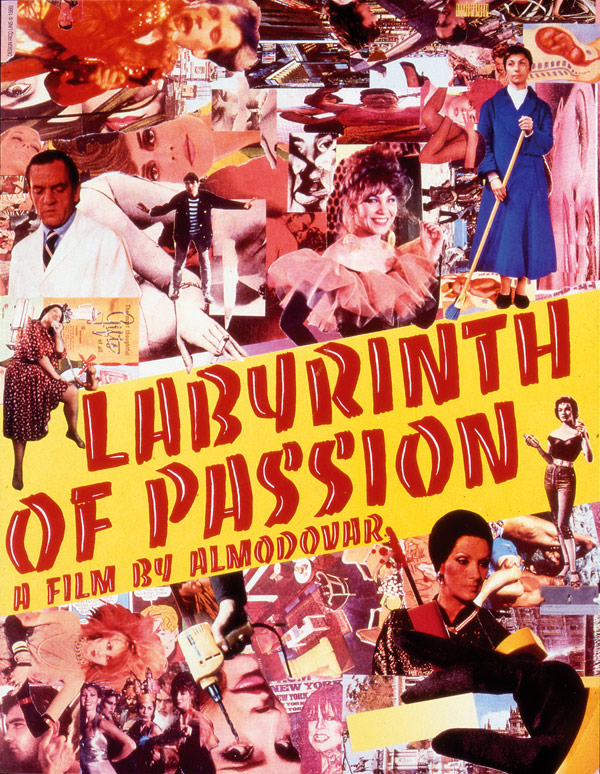 Poster for the US projection of Pedro Almodóvar’s film Laberinto de Pasiones (Labyrinth of Passion), 1989.
Poster for the US projection of Pedro Almodóvar’s film Laberinto de Pasiones (Labyrinth of Passion), 1989.
This is demonstrated not only by his curriculum, but also by the confidence and (spectacular) synthesising capacity he shows when explaining the work done by his studio on its web page. He is an AGI member, so he forms part of a privileged network of designers; and, finally, he is a competition curator and a cultural promoter (see the Brazilian graphic design exhibition organised last year in Chaumont, France).
.jpg) Poster for David Mamet’s play Oleanna, 1991.
Poster for David Mamet’s play Oleanna, 1991.
If posters are regarded as privileged places for the expression of linguistic matters (simplifying a lot, be it because of the physical characteristics of the medium or the sensibilities of the client), in them we will encounter the result of this cultural and professional complexity expressed with absolute clarity. We will find languages that are given expression in the series developed for specific events, the Jazz Symphony Orchestra and Brazil em Cartaz, for instance. They have a stable sign —a mark— with rigorous semantics, and others which are mutually quoted, following rules of assonance that are more rhetoric than semiotic in nature. It is a langue that is manifested in different paroles, spoken in the “here and now” of each specific poster (all are extraordinary).
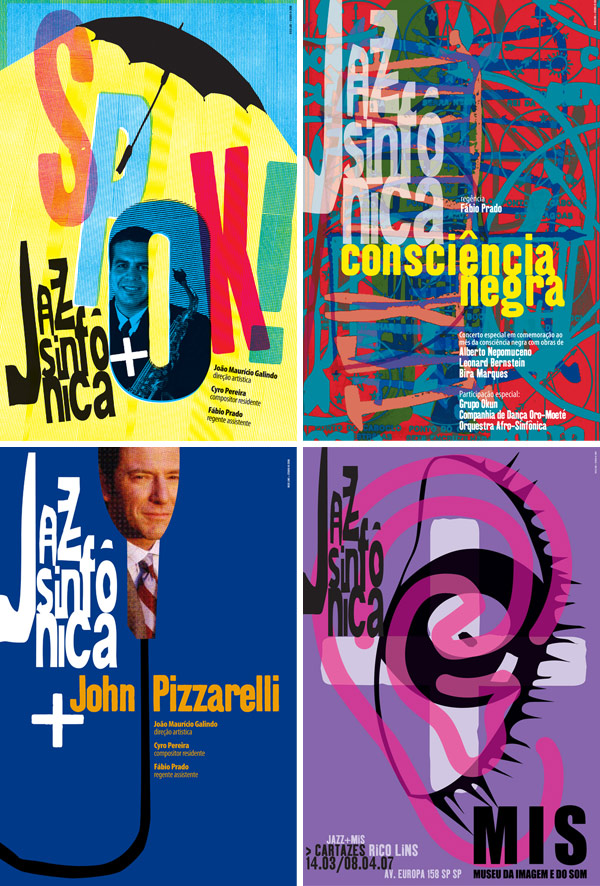
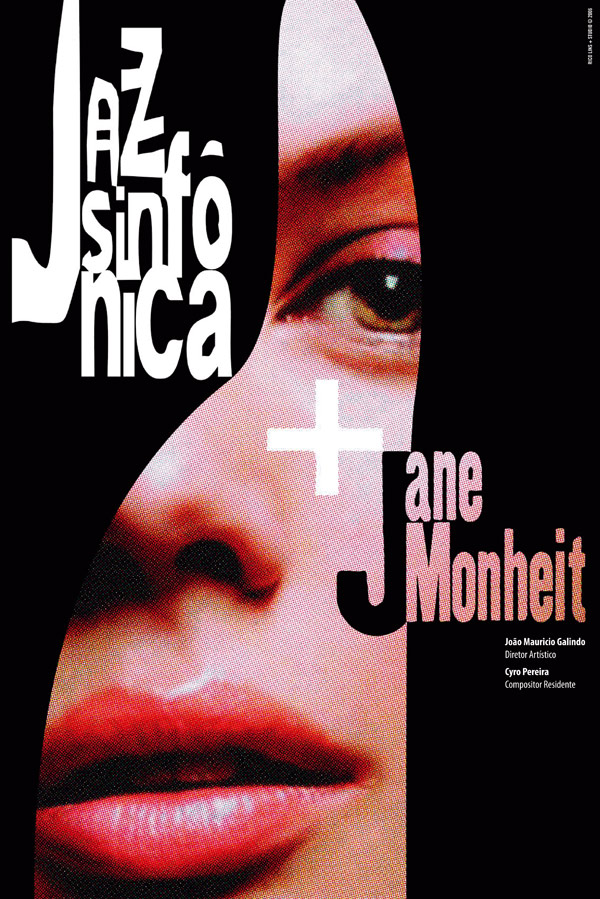 Posters for the Sao Paulo State Jazz Symphony Orchestra, Brazil, 2006. Each of the posters has a double function, with the featured programme printed on the back, enabling posters to be folded for mailing and distribution at concert halls.
Posters for the Sao Paulo State Jazz Symphony Orchestra, Brazil, 2006. Each of the posters has a double function, with the featured programme printed on the back, enabling posters to be folded for mailing and distribution at concert halls.
If we extend our horizon to look beyond these two examples and analyse his different series, i.e. separate clients, the polyphony of cultural referents is such that it is almost unpleasant to consider, because what is interesting is not following a French matrix in a sign or in a graphic register, but to try to understand why that reference was necessary at a given point in time and how it became effective. However, this would require a lot of time, since what Rico Lins displays is a Sistine Chapel of graphic design. Not for its stylistic coherence, obviously, but, on the contrary, for the diversity and scope of meanings in question.
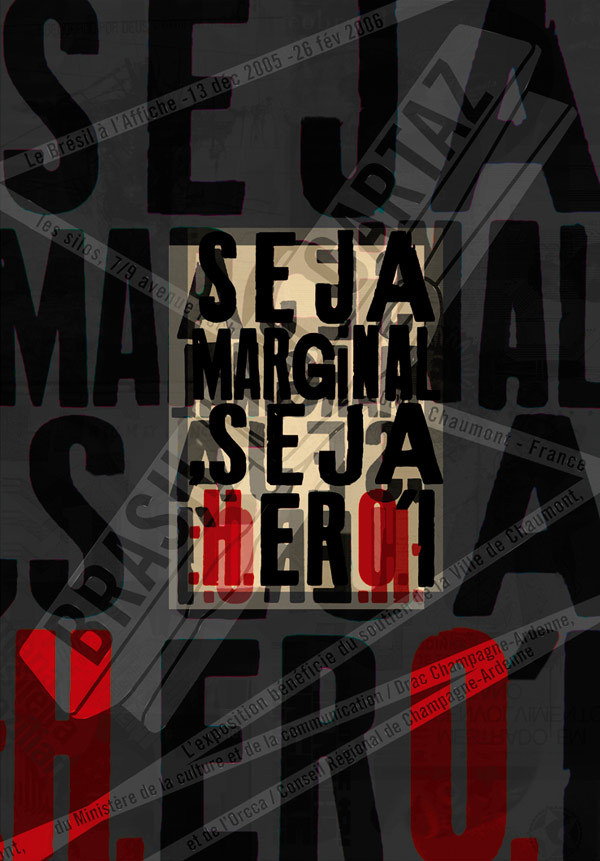
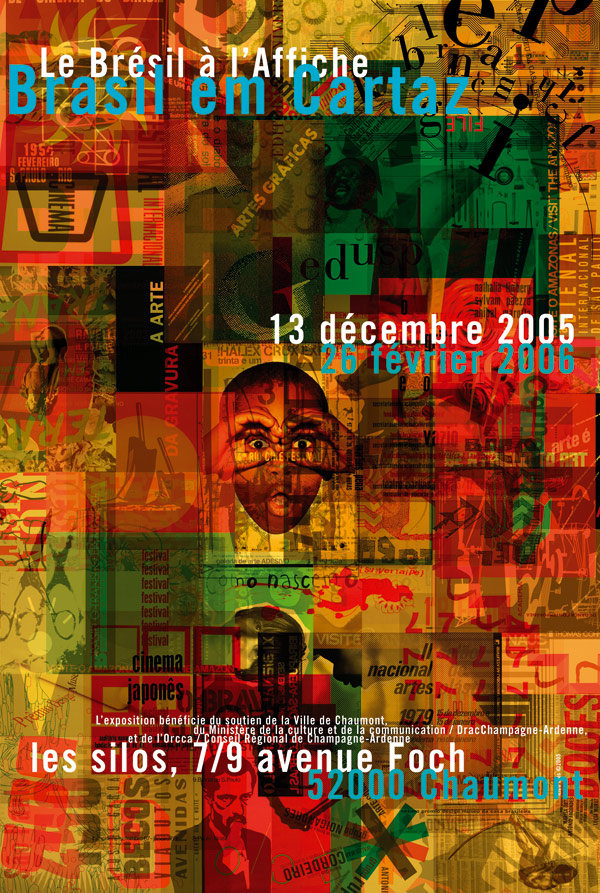
Posters for the Brésil à l’affiche/Brasil em Cartaz exhibition, a retrospective of Brazilian posters organised in Chaumont, France, 2005/2006.
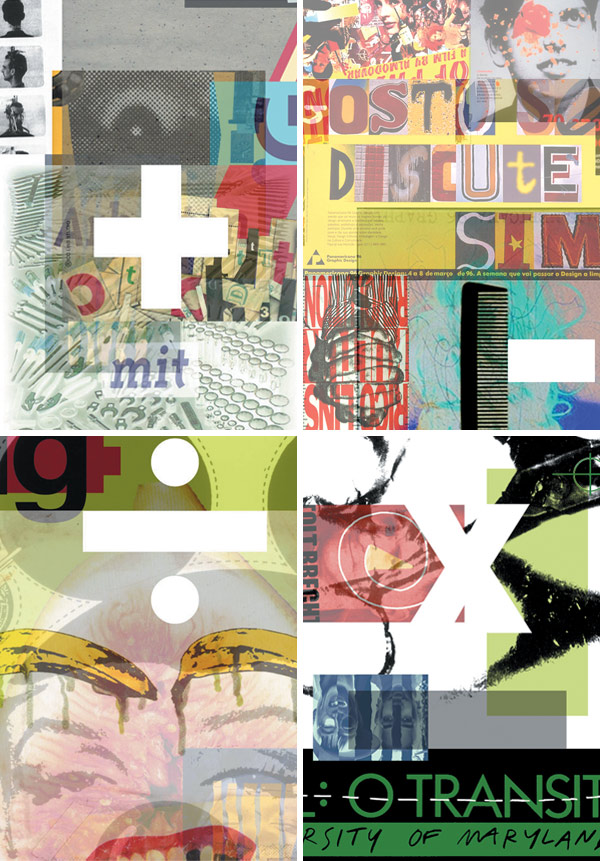
Posters for the launch of Reciclato, a brand of 100% recycled paper. The images were made using work designed by Lins and by other artists, 2001.
Published in Experimenta 58.

